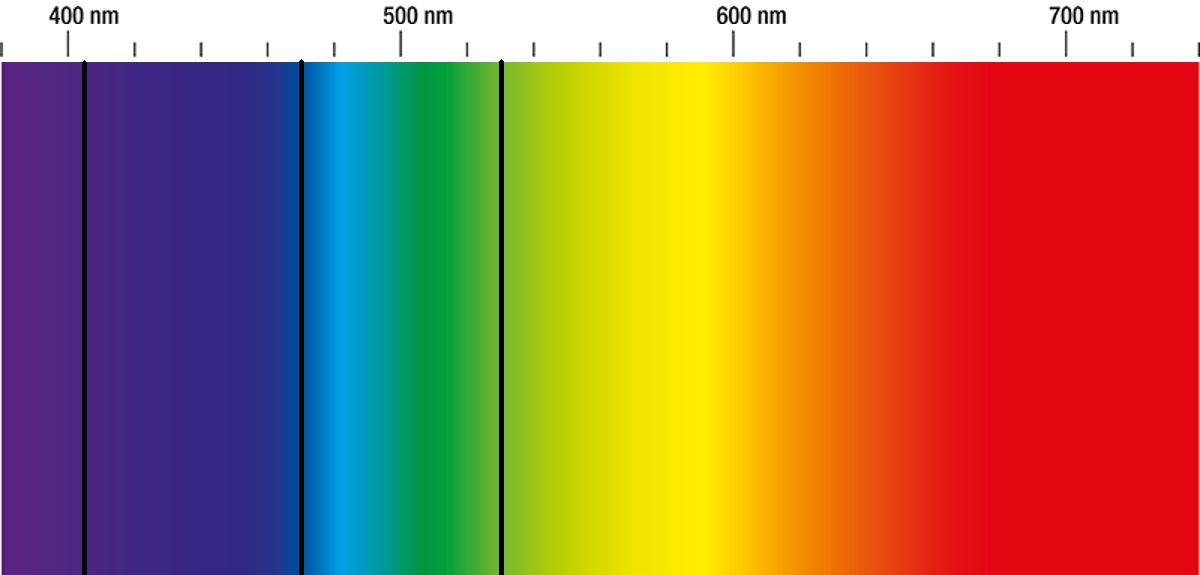
Image credit: Peter Hermes Furian/ Shutterstock
Lighting colour affects sleep and wakefulness
A research team from Oxford University have shown how different colours of light could affect our ability to sleep.
The researchers, led by Dr Stuart Peirson from Oxford's Sleep and Circadian Neuroscience Institute were aiming to understand why exposing mice to bright light caused two - physically incompatible - responses.
Dr Peirson explained: 'When we expose mice to light during the night, it causes them to fall asleep. Yet, at the same time, it also increases levels of corticosterone, a stress hormone produced by the adrenal gland that causes arousal - wakefulness. We wanted to understand how these two effects were related and how they were linked to a blue light-sensitive pigment called melanopsin, known to play a key role in setting our body clock.'
The team exposed mice to three different colours of light - violet, blue and green. Based on the existing data about the role of melanopsin in sleep, they expected that the blue light would induce sleep fastest as the wavelength of the blue light (470 nanometres - nm) was closest to the peak sensitivity of the pigment (around 480nm).
However, it was green light that produced rapid sleep onset - between 1 and 3 minutes. Blue and violet light delayed sleep - the onset of sleep taking between 16 and 19 minutes for blue and between 5 and 10 minutes for violet.
Dr Peirson said: 'The results meant that mice exposed to blue light had less sleep than those exposed to violet and green light. We confirmed the effect by testing mice using green and blue light at a time when they would usually be less active.'
To investigate the role of melanopsin, the team performed the same test on mice lacking the pigment. For these mice, the colours had opposite effects - blue caused rapid sleep onset, while green and violet significantly delayed sleep, showing that melanopsin is necessary for the substantial wavelength-dependent effects of light on sleep.
The researchers also found that while exposure to all three colours of light increased the level of corticosterone stress hormone in ordinary mice, blue light caused a much higher rise. In mice without melanopsin, the response to blue light was greatly reduced. Blocking the effect of corticosterone reduced the sleep-delaying effect, suggesting that the production of this hormone in response to light actively inhibits sleep.
Dr Peirson said: 'This study shows that there are different pathways from the eye to the brain - one directly regulating sleep and the other increasing arousal. Melanopsin has a more complex role than previously thought, affecting both pathways. This is the first time that it has been shown to regulate adrenal stress responses.
'An obvious caveat of this study is that mice are a nocturnal species that are active during the night. As such, green light may be expected to increase wakefulness rather than increasing sleep in humans. We would therefore predict that blue light will further enhance the wake-promoting effects of light by elevating adrenal stress hormones.
'The results also add to our understanding of the effects of light emitting devices on humans, where recent studies have shown that the blue light from these devices delays sleep. However, as we have shown that there are different pathways in the brain, by which different colours of light have different effects on sleep or wakefulness, we need to understand how the overall colour balance of artificial light could affect people's alertness and sleep.'
The paper, Melanopsin regulates both sleep-promoting and arousal-promoting responses to light, is published by PLOS Biology (doi: 10.1371/journal.pbio.1002482).
 Expert Comment: Can Europe hold the line of liberal democracies?
Expert Comment: Can Europe hold the line of liberal democracies?
 Oxford launches first human aerosol TB challenge trial
Oxford launches first human aerosol TB challenge trial
 Rees Centre report reveals challenges faced by Black and Asian kinship carers
Rees Centre report reveals challenges faced by Black and Asian kinship carers
 Expert Comment: The Modern Slavery Act at 10 – what have we learnt for human rights?
Expert Comment: The Modern Slavery Act at 10 – what have we learnt for human rights?